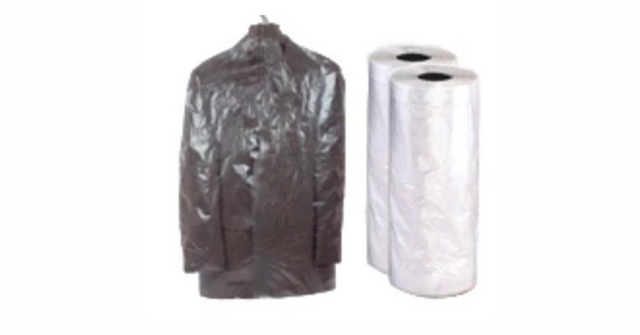Garment covers are a practical solution for businesses and individuals looking to protect clothing during the shipping process. Whether you're sending a single dress or a batch of suits, the proper packaging can make all the difference in ensuring your garments arrive in excellent condition. In this blog, we will explore how garment covers play a key role in preventing damage during shipping, highlighting their features and benefits.
What Are Garment Covers?
Garment covers are protective bags made from various materials, designed specifically to shield clothing from dirt, moisture, and physical damage during transportation. They are commonly used by retailers, dry cleaners, and fashion designers to safeguard their products before they reach the consumer. These covers often come with zippers or other secure closures to keep the garments safe and snug inside. There are several types of garment covers available, from basic plastic options to more durable fabric covers. Depending on the needs of the shipment, garment covers can be customized in size and strength, offering a tailored solution for a variety of clothing items.
Benefits of Using Garment Covers During Shipping
1. Protection from Dirt and Dust
One of the most common causes of damage to clothing during shipping is exposure to dust and dirt. Garment covers help prevent this by acting as a barrier between the fabric and the outside environment. Without a cover, your items are susceptible to contaminants that can leave stains or make garments look worn. Garment covers keep your clothing clean and pristine, which is essential for ensuring a positive customer experience.
2. Shielding from Moisture
Moisture is another major concern when shipping garments. Whether due to rain, humidity, or condensation from temperature changes, moisture can ruin delicate fabrics. Garment covers made from waterproof or water-resistant materials offer an extra layer of protection. This ensures that your garments remain dry, even during transit in less-than-ideal conditions. By preventing moisture exposure, garment covers protect the integrity of the fabric and avoid issues like mildew or color bleeding.
3. Preventing Physical Damage
During shipping, garments are often handled roughly, tossed in with other packages, or pressed against hard surfaces. This can lead to wrinkles, snags, or even tears. Garment covers help prevent physical damage by providing a protective layer that absorbs impact and reduces friction. The cover keeps the garment in place, preventing it from shifting or becoming crushed. Some covers even come with reinforced features, such as padded linings, to further protect against physical harm.

4. Maintaining Shape and Structure
For high-end clothing items such as suits, dresses, or coats, maintaining the garment's shape is critical. Garment covers help to keep clothing in its intended shape by offering support that minimizes creasing or warping. The covers often feature hanger holes, allowing garments to hang freely without getting squashed. This feature is especially important for items like formal wear, where keeping the shape is a key part of their appeal.
5. Easy Identification and Organization
Shipping large quantities of garments can be a logistical challenge. Garment covers can help simplify the process by making it easier to identify and organize items. Many covers come with clear plastic windows or labels, allowing the contents to be visible without removing the cover. This feature is particularly useful when sorting and packing large orders, as it helps ensure each item is shipped correctly.
Choosing the Right Garment Covers for Shipping
When selecting garment covers, there are several factors to consider to ensure your items are properly protected during transit. Below are some key features to look for:
1. Material
The material of the garment cover is crucial for its effectiveness. Common materials include plastic (e.g., polyethylene), fabric (e.g., non-woven polypropylene), and breathable cotton. Each material offers different levels of protection. For example, plastic covers are typically waterproof, while fabric options provide better breathability. Choose a material based on the level of protection needed for your garments.
2. Size and Fit
Garment covers come in a variety of sizes, so it’s essential to select one that fits your clothing. A cover that is too small may not provide adequate protection, while one that is too large can leave the garment vulnerable to shifting inside. Measure your garments and choose a cover that provides a snug fit, offering the perfect balance between security and space
.
3. Durability
If your shipment involves long-distance transport or multiple handling steps, opting for a more durable garment cover can be beneficial. Look for covers with strong zippers, reinforced seams, and tear-resistant materials. This added durability will ensure that your garments are well-protected throughout the journey.
4. Closure Type
Garment covers often come with different closure mechanisms, such as zippers, velcro, or drawstrings. Zippered covers are ideal for secure protection, while velcro or drawstring closures might be better for quick access. Choose a closure type that suits your specific shipping needs and provides ease of use.
Garment covers are an essential tool for preventing damage during shipping. By protecting clothing from dirt, moisture, physical damage, and maintaining the garment’s shape, these covers ensure that garments arrive at their destination in excellent condition. Whether you’re shipping a single item or a large bulk order, using the right garment cover can save time, reduce costs, and enhance customer satisfaction. By choosing the appropriate material, size, and features, you can protect your garments throughout the shipping process and ensure that they arrive in the best possible condition.